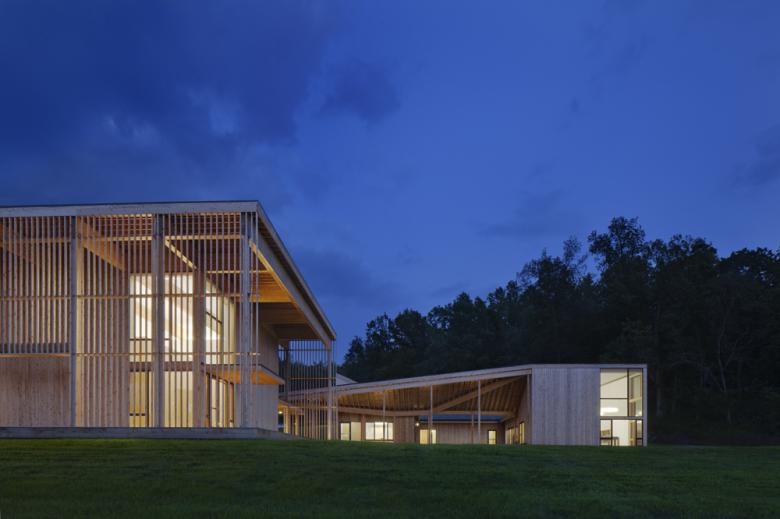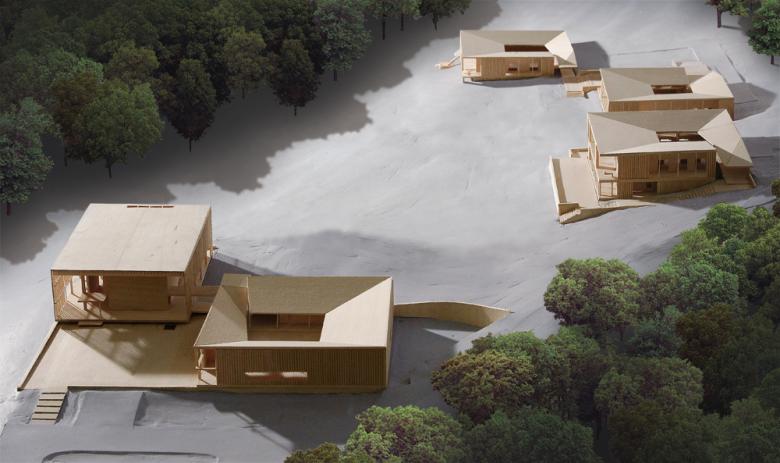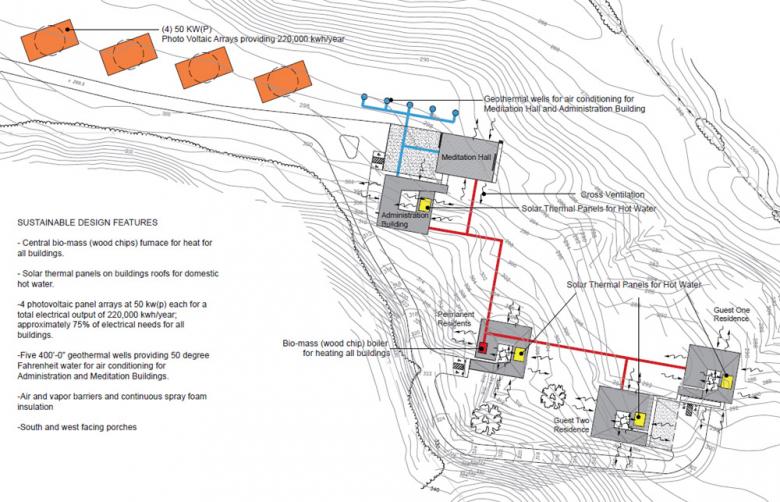Won Dharma Center
Won Dharma Center
On a large rural property in upstate New York, overlooking the Hudson Valley and the Catskill Mountains, sits the Won Dharma Center, "a spiritual community, where people from all walks of life study, ... live and work together." The beautiful setting is enhanced by the new buildings for the Center designed by New York City's Hanrahan Meyers Architects. Serene yet contemporary, the buildings are marked by wooden exteriors and simple interiors. The architects answered some questions about the project that officially opened on October 2, 2011.
What were the circumstances of receiving the commission for this project?
The owner’s representative initially requested a number of architects from the Northeastern region of the U.S. to submit their portfolio for review by the Won Buddhist organization and project sponsors. A short list of three architects was created, and the owner’s representatives along with three reverends from the Won Buddhist organization conducted interviews and visits to completed projects by the architects. Additionally, hMa sent a series of speculative sketches and drawings that imagined the site and the buildings based on meetings with the clients.
Can you describe your design process for the building?
The design process began with a series of very different conceptual approaches to the site plan. The schemes varied from a single volume along the top of the ridge consolidating the entire program into one building; to a cluster of volumes; to individual cabins and small two-room buildings. The clustered schemes had the most appeal as they broke down the scale of the program into five buildings and created public, outdoor gathering spaces between them. Four of the buildings house the administrative functions, reverends and guests and they were conceived as courtyard buildings with complex roof forms – studied in physical and digital structural models. The Meditation Hall was physically modeled at a very large scale as an exposed structural frame with numerous natural and artificial lighting effects. The final design tool was a 6 foot long site model that determined the final configuration and positions of the buildings.
How does the completed building compare to the project as designed? Were there any dramatic changes between the two and/or lessons learned during construction?
The design was constructed with virtually no changes because of the level of detail and accuracy built into the physical and digital models. At the outset of construction the two guest residences were slightly re-positioned farther up hill, and the floor elevations of the buildings were adjusted to minimize cut and fill and the cutting of rock.
How does the building compare to other projects in your office, be it the same or other building types?
Most of hMa’s projects are for communities and organizations with public missions, in that way this project is generally similar to others in the office. Public projects hMa has recently completed include a chapel for the Tenth Church of Christ, Scientist congregation in Greenwich Village, New York and Digital Water Pavilion, a Community Center at Battery Park City featuring a theater, two swimming pools, gymnasium, seven classrooms and a recreation/fitness center.
How does the building relate to contemporary architectural trends, be it sustainability, technology, etc.?
This complex of buildings is notable for its layered approach to exterior and interior spaces and the building envelopes. The outdoor spaces, decks, and wooden screens create a ‘spatial gradient’ that both engages the landscape and enriches the architectural experience. The building envelope is not simply a wall, but a series of layered, performative volumes. This project is also designed as “hyper-green”, where every design decision with respect to energy use is aligned with the organization’s respect for balance and harmony with nature. Natural daylighting, indirect fluorescent lighting, solar thermal panels, radiant floor heating, geo-thermal wells, through ventilation and water management are used in all buildings.
Are there any new/upcoming projects in your office that this building’s design and construction has influenced?
The Won Dharma Center influenced the design of the Digital Water Pavilion, the data-embedded fritted glass wall surrounding the Community Center at Battery Park City. The idea of a performative, sustainably designed envelope takes a new digitally enhanced form while still drawing upon natural and material themes. Working with sound artist Michael Schumacher, hMa developed a frit pattern for the Digital Water Pavilion’s glass arcade wall which is based upon Schumacher’s proportional system of prime integers and the visual effect of water. The frit pattern is “readable” through a smartphone application where users can scan the pattern at the building site and play Schumacher’s sound composition on their mobile device. This extends the idea of a complex, performative envelope into the digital realm, where building envelopes contain data and communicate with building users.
Email interview conducted by John Hill
Won Dharma Center
2011
Claverack, New York
Client
Won Buddhism of America, Inc.
Architect
Hanrahan Meyers Architects - hMa
New York, NY
Design Principal
Hanrahan Meyers Architects with Myonggi Sul + Light and Space
Project Architect
Victoria Meyers and Thomas Hanrahan
Project Manager
Anita Ng
Structural Engineer
Wayman C. Wing Consulting Engineers
MEP/FP Engineer
CS Arch P.C.
Landscape Architect
Seo An Landscape
Lighting Designer
Light and Space Associates
Interior Designer
Myonggi Sul Design
Contractor
Heitmann Builders
Construction Manager
Heitmann Builders
GeoTech
Dente Engineering
Kitchen
Wes Design
Site Area
500 acres
Building Area
32,000 sf
Photos
Michael Moran





